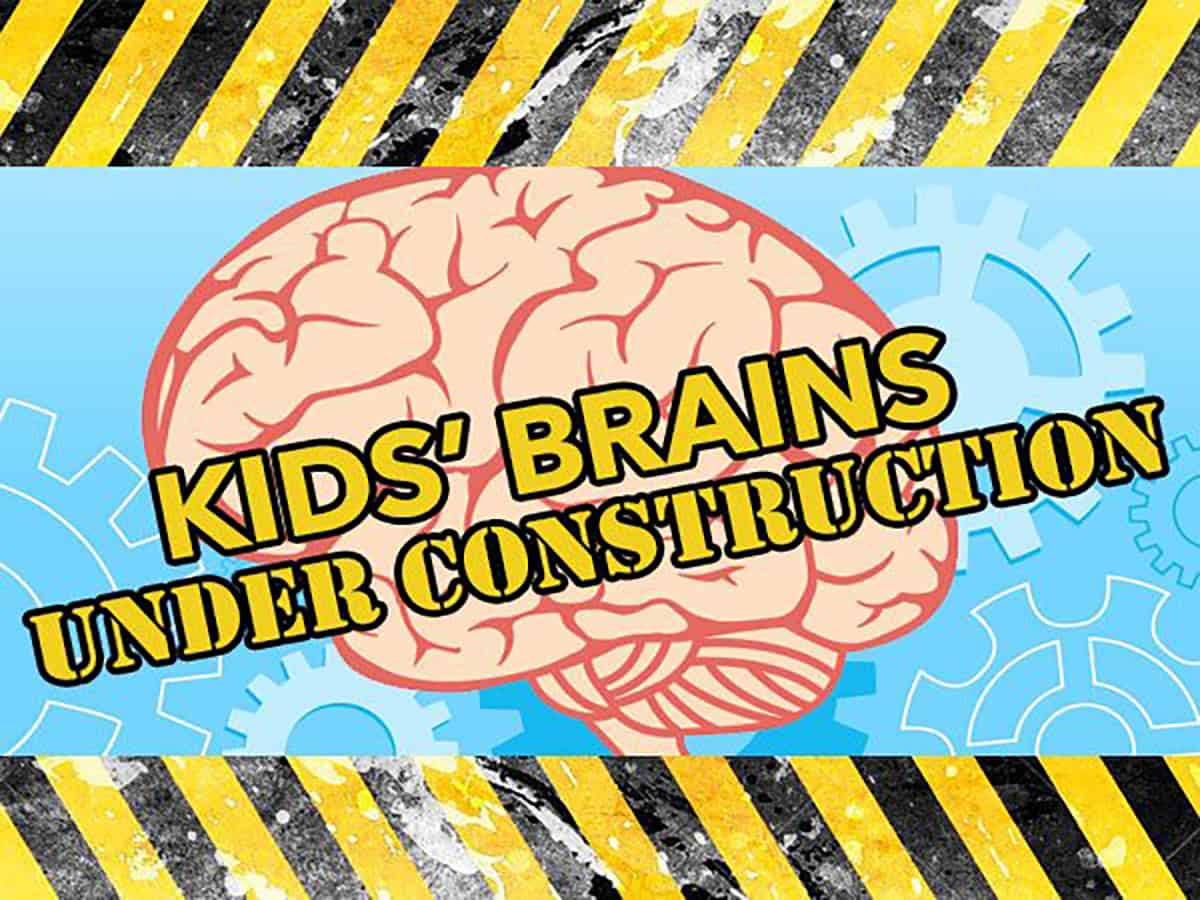Caution! Teen Brain: Still Under Construction
Even for the savviest parents, teen development can be deceiving. Our kids hit puberty and go through a growth spurt. They get taller; they get hair on their legs; they get their drivers’ licenses (hopefully), and, for the most part, they start looking like adults. But don’t let their tall frames and deep voices fool you. Even though their bodies have made it through most of the “construction” process, the teen brain lags behind by about 10 years.
Yes, it is a scientific fact. It takes 25 years or longer for your child’s brain to physically and psychologically reach full maturity. The human brain develops progressively from back to front, starting with the cerebellum, then moving to the midbrain or emotion center. The frontal cortex or executive function area is the last part of the brain to fully develop, which is unfortunate because that area is responsible for judgment, impulse control, decision-making, and insight. Oh, your teen will be able to make some good decisions, take more responsibility, and act like he knows what he is doing, but savvy parents know that lapses in sound judgment and unbalanced risk-taking are signs that those neuronal pathways still have a way to go to develop fully.
But my child is so smart and makes straight A’s!
Great! Those A’s may earn your child a spot on the Dean’s List, but such achievement doesn’t speed up brain maturity. Impressed–and blinded–by their child’s academic talents, many parents incorrectly interpret that great report card as evidence of maturity. Academic achievement becomes a ticket to more adult privileges or a green light for more relaxed screen limits. Parents wrongly assume that higher intelligence or experience with various skills indicates higher brain maturity and better decision-making skills. But scientific facts say that time is the most important factor in maturing your teen’s brain, no matter what your teen says.
What does teen brain maturity have to do with video games and phones?
Even though entertainment screens appear harmless on the surface, they can be full of conflict for a teen brain. Like moths to a flame, teens are drawn to their screen worlds, for their brains are wired for novelty and new information. However, because their judgment centers are still “under construction,” they will easily be drawn to inappropriate risk-taking content including porn, violence, and internet “traps” such as bullying and scams. Teens are not fully able to set time limits, dismiss content, and easily choose the non-screen activities that are important for healthy development. Instead, they will naturally choose low-effort, high-reward activities. Note to Parents… they desperately need to “borrow your frontal cortex,” for they simply do not have the maturity or the wisdom you possess. Letting your teen have full, unlimited access to the world of games and phones is similar to giving your 10-year-old child the keys to the car to “play on the interstate.” It can prove disastrous.
What can I do to help my teens? Do I have to train them?
Setting limits is one of the best things you can do. This may mean delaying the access to entertainment screens longer than they may like. Some parents find success by putting off gaming and phone use through middle school and even through most of high school. That’s a great option. Others will find ways to be more structured by setting many limits with the devices. Hopefully, by now, you can see the importance of putting a strong fence around their screens.
Also, setting limits around content is a must for the tech-savvy parent. This means that you will have to know the games they are playing well. By watching them play, you will get a good idea of their appropriateness and whether you need to step in and make adjustments accordingly. Since they will also not be able to resist the temptations found on YouTube as they research their games, be sure to keep your eye on YouTube as well. Today’s games are not designed to be easy for your child to monitor on his own–remember, he is not playing Pac-Man anymore.
Setting limits on social media is a much more difficult but essential job for parents with a teen brain still under construction. If you allow any social media or if you allow a smartphone, you must take this management job seriously. Your teen will not be able to keep up with the pressures that phones bring. No matter how many times you tell them about the dangers, their underdeveloped cortexes will not be able to fully process what you are saying. Just like the hapless weatherman in the movie Groundhog Day, teens will need to keep learning it over and over. That is normal.
Again, tech-savvy parents know that adult-size teen bodies do not come with fully functioning adult brains. Setting limits, controlling impulses, making good judgments, and knowing when to stop are harder for your teens than you may realize. They still need your guidance. The next time your son is overdoing his game or your daughter is posting inappropriate gossip on her social media site, smile and remind your children that their frontal cortex is still under construction and that they need to borrow yours. Then keep smiling as you collect their devices, give them a break, and send them off to real-life non-tech activities. Be confident that by using your frontal cortex while they are teens, you are laying a great foundation for their futures. One day their brains will catch up with their bodies, and they will grow into fine young adults!
Another way to give your kids’ brain a break is to take the ScreenStrong Challenge. Hit the pause button on screens for just 7 days and see how your family can reconnect with one another. It’s easier than you think! Invite a friend to take the challenge with you and we will help you every step of the way.

